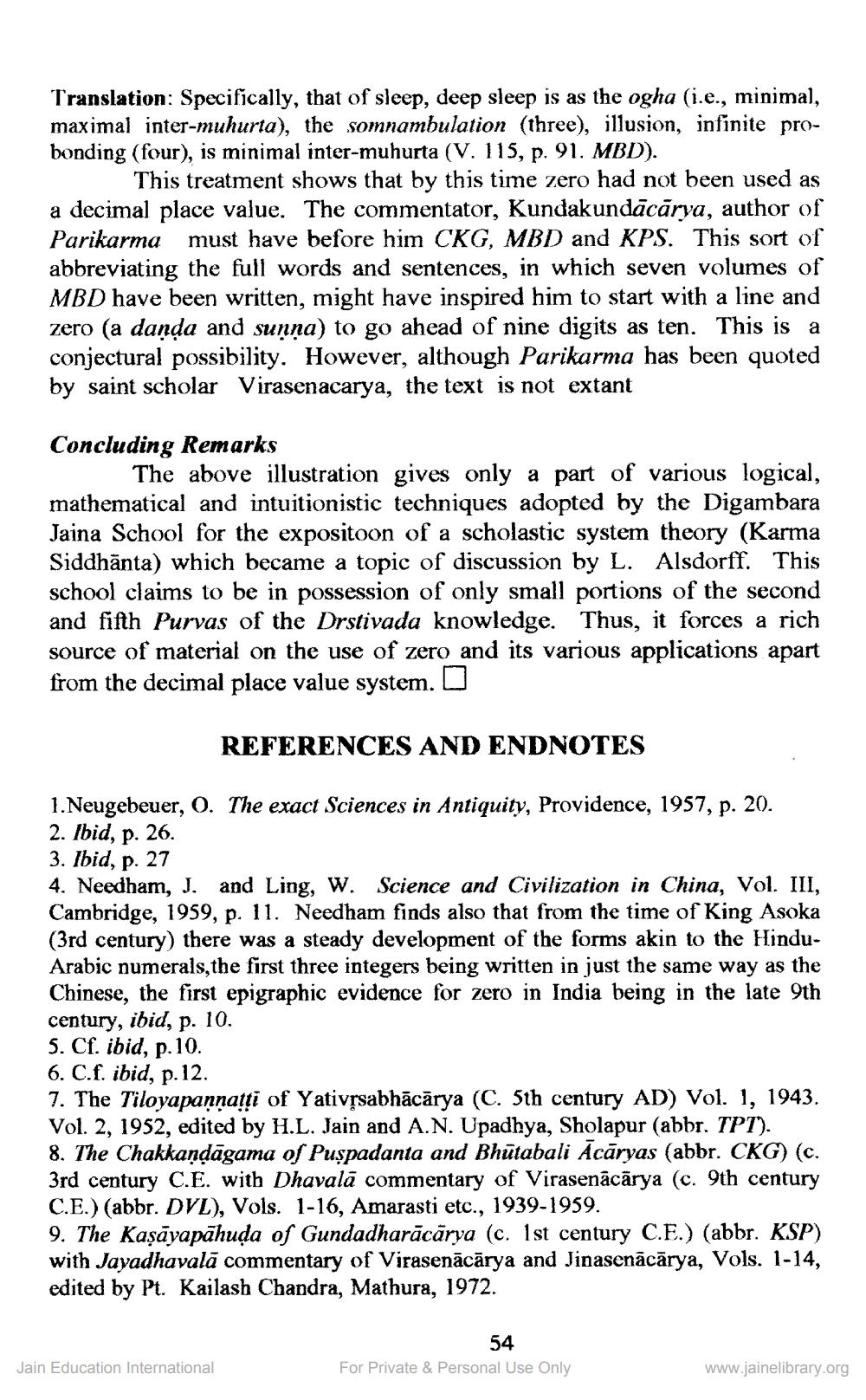________________
Translation: Specifically, that of sleep, deep sleep is as the ogha (i.e., minimal, maximal inter-muhurta), the somnambulation (three), illusion, infinite probonding (four), is minimal inter-muhurta (V. 115, p. 91. MBD).
This treatment shows that by this time zero had not been used as a decimal place value. The commentator, Kundakundācārya, author of Parikarma must have before him CKG, MBD and KPS. This sort of abbreviating the full words and sentences, in which seven volumes of MBD have been written, might have inspired him to start with a line and zero (a danda and sunna) to go ahead of nine digits as ten. This is a conjectural possibility. However, although Parikarma has been quoted by saint scholar Virasenacarya, the text is not extant
Concluding Remarks
The above illustration gives only a part of various logical, mathematical and intuitionistic techniques adopted by the Digambara Jaina School for the expositoon of a scholastic system theory (Karma Siddhanta) which became a topic of discussion by L. Alsdorff. This school claims to be in possession of only small portions of the second and fifth Purvas of the Drstivada knowledge. Thus, it forces a rich source of material on the use of zero and its various applications apart from the decimal place value system.
REFERENCES AND ENDNOTES
1.Neugebeuer, O. The exact Sciences in Antiquity, Providence, 1957, p. 20. 2. Ibid, p. 26.
3. Ibid, p. 27
4. Needham, J. and Ling, W. Science and Civilization in China, Vol. III, Cambridge, 1959, p. 11. Needham finds also that from the time of King Asoka (3rd century) there was a steady development of the forms akin to the HinduArabic numerals, the first three integers being written in just the same way as the Chinese, the first epigraphic evidence for zero in India being in the late 9th century, ibid, p. 10.
5. Cf. ibid, p.10.
6. C.f. ibid, p.12.
7. The Tiloyapanṇatti of Yativṛsabhācārya (C. 5th century AD) Vol. 1, 1943. Vol. 2, 1952, edited by H.L. Jain and A.N. Upadhya, Sholapur (abbr. TPT). 8. The Chakkaṇḍāgama of Puspadanta and Bhutabali Ācāryas (abbr. CKG) (c. 3rd century C.E. with Dhavala commentary of Virasenācārya (c. 9th century C.E.) (abbr. DVL), Vols. 1-16, Amarasti etc., 1939-1959.
9. The Kaṣāyapahuḍa of Gundadharācārya (c. 1st century C.E.) (abbr. KSP) with Jayadhavala commentary of Virasenācārya and Jinasenācārya, Vols. 1-14, edited by Pt. Kailash Chandra, Mathura, 1972.
Jain Education International
54
For Private & Personal Use Only
www.jainelibrary.org




